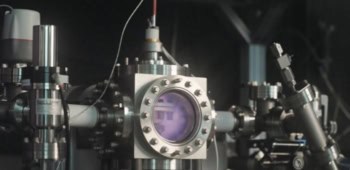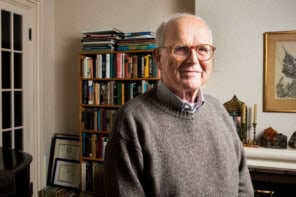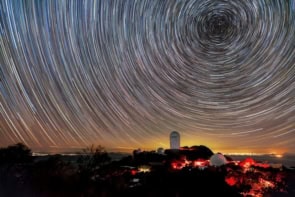Sun in a Bottle: The Strange History of Fusion and the Science of Wishful Thinking
Charles Seife
2008 Viking Books
£18.31 hb 304pp

The great vision of fusion power — harnessing the energy source of the stars for the good of people on Earth — is and has always been a highly attractive one. The history of fusion research is full of interesting tales, from its discovery to the recent completion of the US National Ignition Facility (NIF), now the world’s largest laser (see Physics World March p7). Unfortunately, a new popular account of this history, Sun in a Bottle, mostly retells old stories of notable fusion failures, from mysterious early devices in Argentina through the cold-fusion debacle of the late 1980s. As a scientist who has devoted his career to plasma physics and fusion, I am — at least according to author Charles Seife – part of a community of researchers “unable to rid themselves of their intemperate self-deception”. Having read it, I appear to be faced with a choice: am I a fraud or an incompetent?
The book begins with a rehash of the early development of nuclear weapons in the US. It continues with a series of events and a progression of characters that represent many of the lowlights of the history of fusion. Words from the chapter titles such as “sunshine units”, “baloney bombs”, “cold shoulder” and “secrets” provide a flavour of this account. The proliferation of schemes for fusion plasma confinement; scientists’ growing dismay as they began to understand the multitude of mechanisms by which plasmas can lose energy; the admittedly bad track record of expensive new devices that failed to keep their original promises – all these are described in detail.
Seife, a journalism professor at New York University, is very well read and writes a good phrase. Most of the history in the book has, however, been described better in earlier works, such as Richard Rhodes’ The Making of Atomic Bomb and Dark Sun: The Marking of the Hydrogen Bomb or Joan Lisa Bromberg’s Fusion: Science, Politics, and the Invention of a New Energy Source. Anyone a bit familiar with the field will find little surprising in this book, although someone who has never read about fusion or plasmas might be interested and amused by the stories in it. The idea of using nuclear bombs for giant civil-engineering projects; the media circuses surrounding announcements made by fringe scientists from Argentina to Utah about fusion breakthroughs; the clear explanations of magnetic and hydrodynamic instabilities that have plagued the field — all of these will be interesting to the uninitiated. And the chapter on electrochemical fusion (the original “cold fusion” advocated by Stanley Pons and Martin Fleischmann 20 years ago) tells a complete version of the story as it happened at the time, although it misses the rich thread of fanatical posting on this subject that can still be found on the Internet.
The narrative does pick up as it becomes more personal in the chapter entitled “Bubble trouble”. Here, Seife tells the story of how a team at the Oak Ridge National Laboratory led by Rusi Taleyarkhan claimed to have observed neutron emission from sonoluminescence in deuterated acetone. The team’s reports were published in 2002 in Science magazine, where Seife was working as a journalist. The telling of this story is new, and the author’s unique and close viewpoint makes it interesting to read. Unfortunately, Seife has to admit that he failed to ask the right questions in his investigations at the time, and he is never able to reveal which scientists originally recommended publication of the results, which have not been reproduced. And Seife does not report on the belief still held by a handful of researchers that the imploding bubbles can actually reach thermonuclear temperatures.
There have certainly been low points in fusion research, and I do not disagree that “wishful thinking” is common among we who share the vision of fusion. In fact, I am fond of saying that all proposed fusion schemes require at least one miracle to succeed; however, we should not criticize concepts for needing miracles, but rather judge them on the number and magnitude that are required.
But there have been highlights in fusion’s rich history as well. The venture-capital-fuelled plasma research in southern California may have produced some, shall we say, “interesting” detours in fusion from the 1950s to the present day, but it also saw the birth of General Atomics, a highly successful and productive technology company doing great research in fusion and other fields. The neutron-producing experiments at the Tokamak Fusion Test Reactor at Princeton University in the early 1990s were a great success, and I was proud to be involved in them. There is also the wonderful story of the US-led Tokamak Transport Task Force that set off in 1988 on a decade-long quest to control turbulent transport in plasmas. In the beginning nearly all thought the quest quixotic. But by 1997, the application of reversed-shear velocity profiles — a process in which the flow of material changes magnitude and even direction across the plasma — made confinement no longer the major problem of magnetized fusion.
Among the lowlights and wrong turns, I would have enjoyed some new journalistic research into many of the stories that have never been told. The “blacklight process” tapping into the latent energy of the hydrogen atom, involving fractional quantum numbers; anomalous microwave absorption and the resulting heat from carbon nanotube plasmas – both of these would have been fascinating areas to cover. Some of these stories continue to this day in the hearts and minds of zealots around the world. This “tail” of ideas that refuse to go away could have been a rich subject of this book, but is not.
And what of the future of fusion? In March this year, the world’s largest laser became a reality with over a megajoule of laser light on target at NIF. At the risk of being intemperately self-deceiving, I would also argue that neutrons from fusion can be used to reduce the nuclear waste or improve the proliferation resistance of fission systems. The technical constraints on the plasma physics of such “hybrid” systems are different to the requirements to produce energy from pure fusion (see Physics World March p9). Many researchers are actively examining the technical possibilities of these systems, in the hope that they will help reduce carbon emissions into the atmosphere. And I am continually pleased to see the inventiveness of my fellow fusion scientists in discovering and developing new ideas and technologies to overcome the barriers that nature has created before the promise of fusion. These are all interesting untold stories that would have provided a more balanced and up-to-date narrative.
So, yes, the history of fusion has been “strange”, as all science is. And I admit to “wishful thinking”, for a strong and exciting vision always helps focus and drive effort. Readers of this book will certainly see fraud or incompetence. But there is a better story to be told, and most of it is a success story of scientific progress. I am proud to be part of the community telling it.



